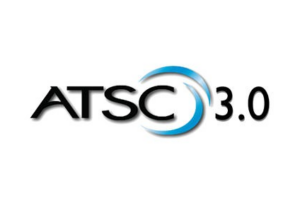The Advanced Television Systems Committee (ATSC) announced that the Fórum Sistema Brasileiro TV Digital Terrestre (SBTVD Forum) has recommended to the Brazilian government the selection of several technologies proposed by ATSC for Brazil’s next-generation terrestrial digital television standard.
The ATSC 3.0 elements selected by the SBTVD Forum, and others still under consideration, are all proven technologies in the ATSC 3.0 suite of standards – the world’s first IP-based system that marries broadband and broadcast – already being implemented in South Korea and the United States and coming soon to Jamaica.
“ATSC commends SBTVD Forum for its very well-organized process of developing Brazil’s TV 3.0 system,” said ATSC President Madeleine Noland. “Over the past decade ATSC members developed the ATSC 3.0 system, and I am extremely proud that after rigorous testing and evaluation in Brazil, many elements of ATSC’s state-of-the-art terrestrial broadcast system have been selected. ATSC is ready to support SBTVD Forum as it applies these technologies to Brazil’s unique needs.” Noland also congratulated the ATSC IT-4 Brazil Implementation Team. “IT-4 members have been diligently supporting ATSC technologies throughout the process and will continue their efforts in the upcoming phases of the SBTVD evaluation process.”
The SBTVD Forum is a non-profit organization of private and public companies responsible for digital TV deployment in Brazil. It makes recommendations to the Brazilian Ministry of Communications for inclusion in the “TV 3.0 Project,” which is the Forum’s title for Brazil’s next generation of digital TV, including both over-the-air broadcast and over-the-top broadband components. The recommendations are the result of a Call for Proposals and subsequent testing and evaluations conducted by the Forum since the start of the TV 3.0 Project in July 2020.
While development of “TV 3.0” specifications and some additional testing will continue over the course of the next two years, decisions made thus far selected five key technologies proposed by ATSC for both the broadcast and broadband components of the “TV 3.0” system:
- ROUTE/DASH Transport
- MPEG-H Audio
- IMSC1 Captions
- HDR10 Video High Dynamic Range EOTF (with optional dynamic HDR metadata based on SMPTE ST 2094-10 and SMPTE ST 2094-40)
- ATSC 3.0 Advanced Emergency Alerting
Additional technologies proposed by ATSC were selected specifically for the TV 3.0 broadband component:
- H.265/HEVC Video Base Layer Encoding
- HLG Video High Dynamic Range EOTF (optional)
- SL-HDR1 High Dynamic Range delivery (optional)
- AC-4 Audio (optional)
Brazil plans to begin deployment of its TV 3.0 system in 2024. A complete description of the TV 3.0 Project is available at https://forumsbtvd.org.br/tv3_0/. It includes the recommendation that testing and evaluation will continue in 2022-23 on the over-the-air Physical Layer and portions of the Application Coding (i.e., interactive) elements of the TV 3.0 system. ATSC’s proposals for ATSC 3.0 Physical Layer and ATSC 3.0 Interactive Content systems remain among those to be further evaluated.
Skip Pizzi, Chair of ATSC’s Brazil Implementation Team, also welcomed the news, noting that “the Implementation Team is a collaborative effort of 15 ATSC member companies and others, and we are thrilled by the SBTVD Forum’s decisions to adopt so many ATSC-proposed technologies. We congratulate the Forum on its progress and look forward to our continuing collaboration in the next phase of TV 3.0 development.”
About ATSC:
The Advanced Television Systems Committee, Inc. is an international, non-profit organization developing voluntary standards and recommended practices for broadcast television and multimedia data distribution. ATSC member organizations represent the broadcast, professional equipment, motion picture, consumer electronics, computer, cable, satellite, and semiconductor industries. ATSC also develops implementation strategies and supports educational activities on ATSC standards. ATSC was formed in 1983 by the member organizations of the Joint Committee on Inter-society Coordination (JCIC): the Consumer Technology Association (CTA), the Institute of Electrical and Electronics Engineers (IEEE), the National Association of Broadcasters (NAB), the Internet & Television Association (NCTA), and the Society of Motion Picture and Television Engineers (SMPTE).

